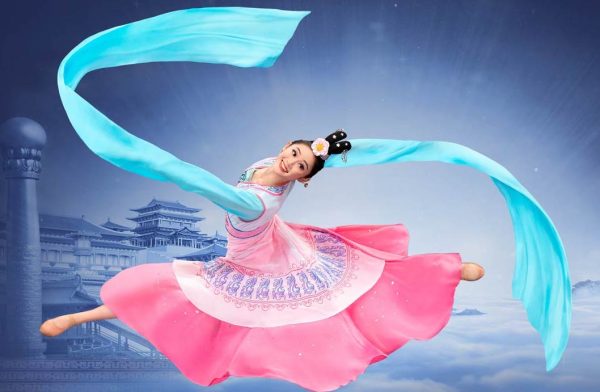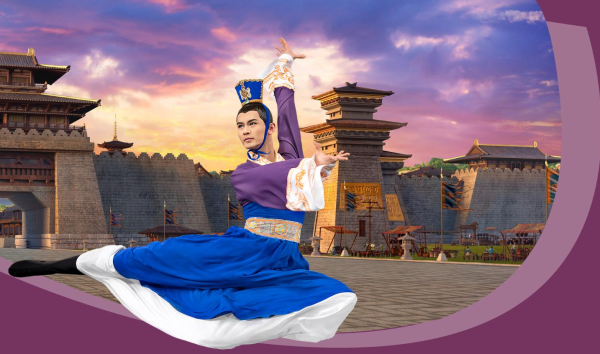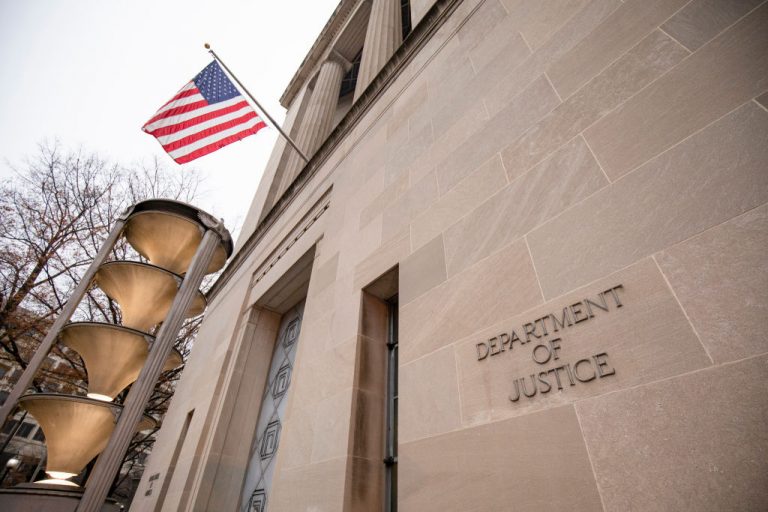Journalists from the New York Times have spent nearly half a year working to collect information and craft a negative narrative of Shen Yun Performing Arts, the globally acclaimed classical Chinese dance company that has long been seen as a political target by the regime in Communist China.
According to information compiled by a recent longform report by The Epoch Times, the NYT’s reporters actively sought out former Shen Yun performers since last 2023 to paint a skewed image regarding the company and Falun Gong, the Buddhist-school faith group that guides many of Shen Yun’s artists and staff.
Shen Yun, whose mission is to revive traditional Chinese culture and whose slogan is “China Before Communism,” has been a major thorn in Beijing’s side since its founding in 2006. The company inherited and refined the tradition of classical Chinese dance, an art form stretching millennia into antiquity, to create an “inspiring vision of what China was and could be without the Communist Party,” as described in a recent review of Shen Yun published in The Hill.

Falun Gong, also known as Falun Dafa (法輪大法), has been persecuted in mainland China since 1999, with its adherents subjected to brutalities such as electroshock torture, injection with dangerous drugs, and execution by organ harvesting.
If run as planned, the NYT’s piece would be the latest in decades of biased reporting on Falun Gong that aligns with and plays into the Chinese Communist Party’s agenda of demonizing and destroying the traditional meditative discipline.
A matrix of disinformation
Success
You are now signed up for our newsletter
Success
Check your email to complete sign up
In his expose of the New York Times’ planned piece, titled “New York Times, After Years of Appeasing CCP, Now Plans Attack on Shen Yun,” Epoch Times reporter Petr Svab laid out how various Shen Yun performers and other Falun Gong practitioners were approached by the NYT writers, and asked questions that seemed intended to ferret out unsavory details about Shen Yun and the Falun Gong community in general.
Falun Gong, first taught to the public in 1992 by Master Li Hongzhi, is a qigong practice that, in addition to meditation exercises, emphasizes spiritual and moral cultivation according to its core principles of truthfulness, compassion, and forbearance (真善忍).
Prior to the persecution, Falun Gong was practiced by up to 100 million people in China and other countries, and received praise from Chinese government agencies for its efficacy in promoting social morality and improving its practitioners’ health.

Senior Chinese officials, including then-Premier Zhu Rongji and the CCP’s third-ranked Politburo member, Qiao Shi, commended Falun Gong in the months leading up to the persecution, with the latter proclaiming that Falun Dafa brought “hundreds of benefits and not a single harm” to China and its people.
However, on orders of then-Communist Party boss Jiang Zemin, who saw Falun Gong’s faith in divinity and the supernatural as a threat to the CCP’s ideology of Marxist atheism, while its police forces detained and abused thousands of practitioners, the regime employed a blanket propaganda campaign smearing Falun Gong as a dangerous “cult.”
In this, the CCP sought to not only indoctrinate the Chinese people to hate Falun Gong and follow the Party, but also in hopes of enlisting foreigners to help marginalize the faith group and diminish international awareness of what Falun Dafa actually is, as well as the horrors its adherents face in China.
According to a newly released report by the Falun Dafa Information Center (FDIC) working with open sources, around two-third of the New York Times’ reporting on Falun Gong since 1999 has contained falsehoods or misrepresentations of the practice and its beliefs.

Other major outlets, such as The Atlantic and the New Yorker, have run similar reports on Falun Gong rife with willful ignorance and repetition of CCP talking points, whilst being seemingly devoid of attempts to understand the faith in its appropriate cultural context.
Some typical false claims include those that Falun Gong does not allow its adherents to receive medical treatment, or that its teachings prohibit mixed-race marriages. Others ride upon vague representations of Falun Gong as being controversial or strange.
Meanwhile, the NYT has shied away from reporting on the crime of forced organ harvesting from Falun Gong adherents, despite mounting evidence of the atrocity being widespread since the early 2000s, and coverage in other major media outlets, Svab noted in his article.
In a 2019 testimony to the China Tribunal, a London-based independent panel of experts that reviewed the evidence of forced organ harvesting, then-New York Times reporter Didi Kirsten Tatlow described how, in 2016, she had met Chinese transplant doctors and overheard them hinting that prisoners of conscience were being used as unwilling organ donors.

But when she wanted to do an investigation on the subject, the NYT, despite “initially tolerating my efforts, made it impossible for me to continue,” she told the Tribunal.
In 2020, the China Tribunal determined that “forced organ harvesting [had] been committed for years throughout China on a significant scale and that Falun Gong practitioners [had] been one—and probably the main—source of organ supply.”
A culture of respect and self-improvement
According to former Shen Yun performers who were approached by the NYT reporters, they were particularly keen on hearing about whether the company had prevented them from receiving treatment for injuries, or coerced them into continuing to dance despite being hurt.
Other questions posited by the reporters focused on the possibility of an abusive environment in Shen Yun, while they appeared to show no interest in the reverse.
“We know these reporters are targeting interviews [with] a tiny group that might have something bad to say about Shen Yun, and seem to be ignoring the overwhelming majority [of artists] who see their time at Shen Yun positively and deeply rewarding,” Ying Chen, a vice president of Shen Yun, told the Epoch Times.

Contrary to the likely angle of the New York Times’ planned article, people associated with Shen Yun and practitioners of Falun Gong have shared positive experiences about the performing arts company.
Meanwhile, Falun Gong’s teachings instruct practitioners to adhere to the laws and norms of their secular communities, while avoiding unethical, self-serving, and dishonest behavior, such as using the faith as a cover for amassing funds.
Shen Yun artists and educators highlighted the discipline, dedication, and passion required to succeed in the highly competitive field of professional dancing. They highlight a culture of respect, self-improvement, and adherence to traditional values, which they argue could be misrepresented by critics and — by extension — the NYT.
“To become an artist of such a high caliber, it definitely takes a lot of grit and a lot of persistence, and you have to sacrifice a lot of time and energy,” said Alison Chen, a former Shen Yun dancer who now teaches and spearheads the dance department at Fei Tian College’s campus in nearby Middletown, New York.

Jimmy Cha, a principal dancer with Shen Yun who is originally from South Korea, shared how classical Chinese dance aligns more closely with the body’s natural tendencies, resulting in reduced strain compared to traditional ballet. Cha, who transitioned from classical ballet to join the performing arts troupe in 2008, said that Shen Yun artists are supported through every step of their training.
“Keeping everyone in tiptop shape and having their technique constantly monitored helps avoid many problems,” he said.
Kay Rubacek, a mother of two Shen Yun performers, refuted claims of inadequate care and described a supportive and nurturing environment for the artists.
“It’s absolute rubbish,” said Rubacek of the NYT’s angling. “Everyone who watches the show, sees Shen Yun, they can see that these dancers love it. They really love what they do.”
Rubacek, an award-winning filmmaker, author, and TV host, shared how she meticulously assessed the environment at Shen Yun and its affiliated educational institutions before allowing her children to enroll. “I’m very careful with where I send my kids. I’m very protective of them,” she told The Epoch Times.
‘The CCP’s dream come true’
Throughout the years, while trying to craft a false image of Falun Gong abroad, the CCP has employed various strategies to hinder Shen Yun’s global performances — including pressuring theaters, persecuting family members of artists in China, and misusing the U.S. legal system.
In one instance, the FBI arrested two suspected Chinese agents who attempted to bribe officials into rescinding Shen Yun’s nonprofit status, while individuals suspected of links to the CCP have brought forth frivolous environmental lawsuits against the company’s campus in New York’s Orange County.

Critics have long accused the New York Times of downplaying the CCP’s human rights abuses and echoing the Communist Party’s rhetoric concerning Falun Gong.
“Only in a handful of articles has The New York Times managed to include the most basic explanation of Falun Gong’s beliefs—its core tenets of truthfulness, compassion, and forbearance,” Svab wrote in his article for The Epoch Times.
Larry Liu, deputy director of FDIC, warned that if the New York Times follows through with its planned article, it would not only stand to affect perceptions about Shen Yun, but perpetuate damaging misconceptions about Falun Gong practitioners around the world and even Chinese culture.
“This article will likely be the CCP’s dream come true,” he said.
Similarly, George Xu, vice-president of Dragon Springs, where the Shen Yun campus is located, emphasized the potential dangers stemming from false narratives as he recalled a security threat influenced by such misinformation.
“The false narratives that the Times seems to be pursuing are a grave concern for us because it can create real danger,” said Xu, adding that several months ago, local and federal law enforcement agencies responded to a perceived threat from a man of Chinese descent. The individual expressed a desire on social media to join a “death squad” and shared a video of himself loading magazines for an AR-15 rifle.
That individual “propagates these same false narratives and had been speaking with some of the same individuals the [New York] Times is interviewing,” Xu added.







